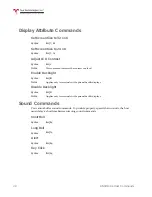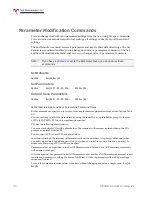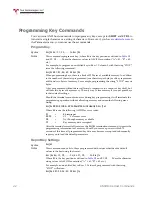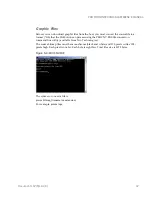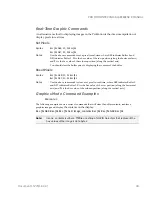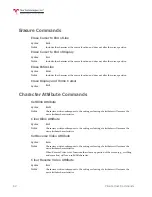
PROMOTION TECHNICAL REFERENCE MANUAL
Document 15774(1.0.0.0)
51
Advanced Control Mode
Advanced Control Mode (ACM) enables you to restrict the input and output of the terminal’s
keypad by assigning specific hex values to each key press and each subsequent key release,
making it ideal to control devices or applications in environments where safety is a primary
concern. While in ACM, the following terminal features and functions are affected:
•
Terminal Parameters
— to use ACM, you must ensure that the Data Bits parameter is set
to eight data bits.
While in ACM mode, terminal echo and key repeat are disabled.
You cannot save ACM settings. If power is lost, the terminal will revert to Normal mode.
•
Menu Access
—access to the Parameter Setup menu, the
Key Output Definition Setup menu
and Contrast Control is disab
led.
•
ENQ Acknowledgement
—when the host enables ACM, the terminal’s response to an
ENQ (
05h
) becomes a DLE (
10h
) instead of an ACK (
06h
). This response will enable the
host to verify that the terminal is in ACM.
The host should then periodically check for DLE at a fixed time interval as required for
your application (such as 25 ms) to verify ACM and connection of the terminal.
Communication must be set to eight data bits.
•
Key Codes
—while in ACM, the terminal makes a distinction between a key press and
key release when transmitting data to the host.
For key presses, the terminal sends the default hex value of the key (i.e., A = 41h, B = 42h,
etc.). Any keys redefined in Normal (non-ACM) mode will return to their default settings
until the suspension of ACM activities.
For key releases, the terminal adds a hex value of 80 to the default hex value (i.e., A = 41h
+ 80h = C1, B = 42h + 80h = C2, etc.).
For example, pressing F1 sends
11h
, while releasing F1 sends a
91h
.


